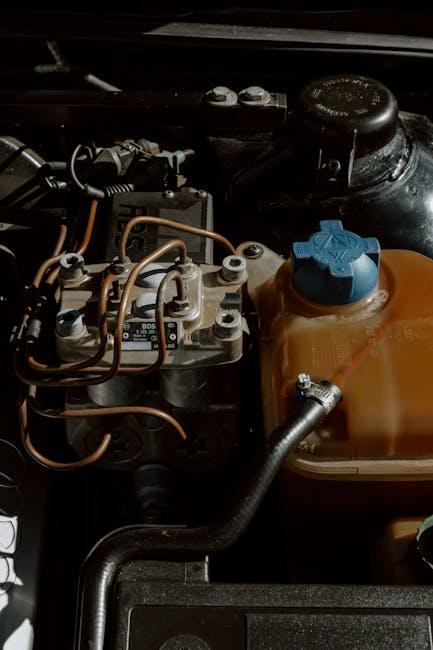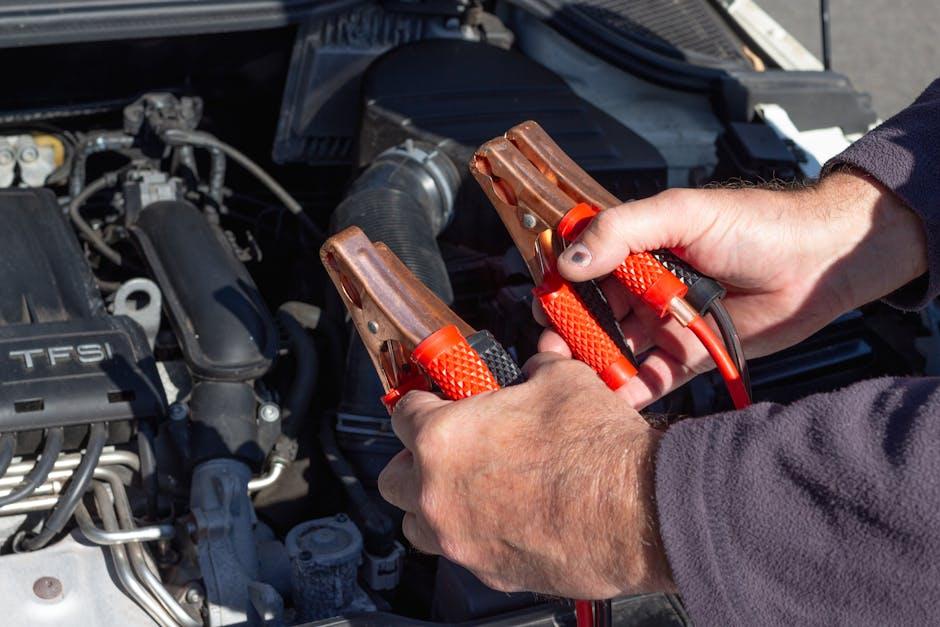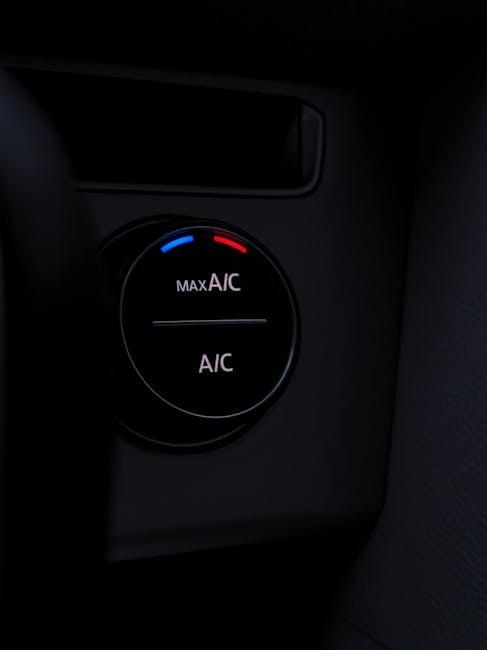In the intricate dance of wires, circuits, and sensors that power a modern car, even a small electrical hiccup can bring the entire performance to a halt. Electrical failures are among the most frustrating and perplexing issues drivers encounter, often sneaking in without warning and leaving a trail of confusion. Understanding the common causes behind these failures not only demystifies the black box under the hood but also empowers car owners to take proactive steps in maintenance and troubleshooting. From corroded connections to battery woes, this article delves into the electrical undercurrents that can disrupt your vehicle’s harmony, shedding light on how and why these faults occur.
Table of Contents
- Understanding Wiring Harness Issues and Their Impact on Vehicle Performance
- Battery Problems and How to Maintain Reliable Electrical Power
- The Role of Faulty Alternators in Car Electrical Failures
- Identifying and Preventing Corrosion in Electrical Connections
- How Sensor Malfunctions Disrupt Modern Automotive Systems
- Routine Electrical System Inspections for Long-Term Vehicle Health
- Q&A
- Closing Remarks

Understanding Wiring Harness Issues and Their Impact on Vehicle Performance
Electrical systems in modern vehicles rely heavily on the integrity of wiring harnesses, which serve as the central nervous system distributing power and signals throughout the car. When wiring harnesses suffer from wear, corrosion, or poor connections, it can lead to erratic behaviors such as flickering dashboard lights, intermittent power loss, or complete electrical failure. These issues are often rooted in common factors like excessive heat exposure, mechanical abrasion against sharp edges, or exposure to moisture. Over time, the insulation covering the wires may degrade, causing shorts or open circuits that disrupt critical functions.
Understanding the subtle signs of wiring harness degradation is crucial for maintaining vehicle performance and safety. The impact of these faults ranges from minor inconveniences to severe engine stalling or failure of safety systems like airbags and ABS. Below is a quick reference table highlighting typical wiring harness issues and their immediate effects on vehicle performance:
| Issue | Cause | Impact |
|---|---|---|
| Corroded Connectors | Moisture Ingress | Intermittent Sensor Failures |
| Broken Wires | Mechanical Wear | Complete Loss of Circuit Function |
| Damaged Insulation | Heat / Rodents | Short Circuits and Blown Fuses |
| Loose Connections | Vibration / Poor Installation | Unpredictable Electrical Behavior |
- Early detection through visual inspection and diagnostic tools can prevent costly repairs.
- Proper harness routing during maintenance protects wires from damage.
- Environmental protections such as sealing harnesses against moisture and heat extend their lifespan.

Battery Problems and How to Maintain Reliable Electrical Power
One of the most common culprits behind electrical system malfunctions is a weak or failing battery. Batteries degrade over time due to sulfation, corrosion on terminals, and insufficient charging, leading to unreliable starts and dimming lights. Regular checks of battery voltage and terminal cleanliness play a critical role in maintaining a steady flow of power. Ensure terminals are free from corrosion by cleaning them with a mixture of baking soda and water, then applying a protective layer of petroleum jelly to slow future buildup.
To extend battery life and support consistent electrical performance, consider these key maintenance tips:
- Routine voltage tests: Use a multimeter to check for a stable 12.6V or higher when the engine is off.
- Secure connections: Tighten battery clamps to prevent poor contact caused by vibrations.
- Limit parasitic drain: Turn off all accessories when vehicles are parked for long periods.
- Regular driving: Charge the battery by driving at least 20 minutes to keep the alternator functioning properly.
| Symptom | Possible Battery Cause | Action |
|---|---|---|
| Dim headlights | Low voltage | Test & recharge battery |
| Clicking on start | Corroded terminals | Clean & tighten connections |
| Engine stalls | Weak charge | Drive to recharge or replace |

The Role of Faulty Alternators in Car Electrical Failures
At the heart of your car’s electrical system lies the alternator, a crucial component responsible for generating the electricity needed to power everything from headlights to the ignition system. When this vital device malfunctions, the ripple effects can be widespread, leading to unexpected electrical failures that may leave you stranded. A faulty alternator often results in a drained battery since it can no longer effectively recharge it while the engine runs. This creates a cascade of problems, such as dim lights, intermittent power loss in electronic systems, and even complete engine shutdown due to insufficient electrical supply.
Identifying alternator issues early can save you from inconvenient breakdowns and costly repairs. Here are some common symptoms caused by alternator failure:
- Flickering or dimming dashboard lights indicating inconsistent power output
- Difficulty starting the engine as the battery loses charge
- Unusual whining or grinding noises stemming from worn alternator bearings
- Electrical accessories operating erratically due to voltage fluctuations
| Fault Symptom | Possible Cause | Recommended Action |
|---|---|---|
| Battery warning light on dashboard | Alternator not charging battery | Immediate electrical system test |
| Dim headlights during low RPM | Inconsistent alternator voltage output | Check alternator belt and voltage regulator |
| Electrical system shuts down unexpectedly | Complete alternator failure | Replace alternator assembly |

Identifying and Preventing Corrosion in Electrical Connections
Corrosion in electrical connections isn’t just an eyesore—it’s a silent saboteur that disrupts the flow of electricity within your vehicle. Moisture, road salts, and airborne pollutants create the perfect storm for oxidation, which manifests as a flaky or crusty deposit on terminals and connectors. Left unchecked, this buildup increases resistance, causing erratic signals or complete circuit failure. Regular inspection is essential: look for a greenish or white powdery residue around battery terminals, fuse boxes, or grounding points.
Preventing corrosion involves a proactive approach during both installation and maintenance. Applying dielectric grease to connections creates a moisture-resistant barrier, while using high-quality terminal protectors can fend off environmental damage. Below is a quick reference table outlining common prevention methods and their benefits:
| Prevention Method | Benefit |
|---|---|
| Dielectric Grease | Blocks moisture and reduces oxidation |
| Terminal Protectors | Inhibits salt and dirt accumulation |
| Regular Cleaning | Removes early corrosion for sustained conductivity |
- Routine maintenance: Schedule periodic checks, especially after winter or rainy seasons.
- Secure connections: Loose terminals allow moisture ingress and accelerate corrosion.

How Sensor Malfunctions Disrupt Modern Automotive Systems
Modern vehicles rely heavily on a network of sensors to continuously monitor and regulate everything from engine performance to safety features. When one sensor malfunctions, it can create a cascade effect that disrupts the entire system. For example, a faulty oxygen sensor can misread exhaust emissions, leading to inefficient fuel combustion and increased pollution, while also triggering warning lights that cause driver confusion. These sensor failures not only degrade vehicle performance but also challenge diagnostics, making it harder for technicians to pinpoint the root cause quickly.
Below is a summary of the most common sensor issues and their potential impacts, illustrating why even minor glitches can escalate into significant malfunctions:
- Inaccurate readings: Leading to incorrect engine adjustments.
- Intermittent signals: Causing erratic system behavior or shutdowns.
- Corrosion or wiring damage: Interrupting sensor communication with the ECU.
- Contamination: Dirt, oil, or water interfering with sensor operation.
| Sensor Type | Common Malfunction | Effect on Vehicle |
|---|---|---|
| Mass Air Flow (MAF) Sensor | Clogged or dirty sensor | Rich or lean air-fuel mixture |
| Throttle Position Sensor | Erratic signal output | Unstable idle, poor acceleration |
| Coolant Temperature Sensor | Faulty temperature readings | Incorrect fuel delivery, overheating warnings |

Routine Electrical System Inspections for Long-Term Vehicle Health
Regular check-ups on your vehicle’s electrical system can act as a sturdy shield against unexpected breakdowns. Components like wiring harnesses, connectors, and the battery terminals are prone to corrosion and wear over time, which can silently degrade performance. A routine inspection helps identify loose connections or frayed wires before they escalate into bigger issues, ensuring your dashboard indicators and lighting systems function without interruption.
Incorporating simple inspection points into your maintenance schedule can extend the lifespan of your car’s electrical network dramatically. Key focus areas include:
- Battery health: Checking for corrosion, voltage fluctuations, and secure mounting.
- Alternator output: Ensuring consistent power supply to all components.
- Fuses and relays: Quick replacement prevents circuit failures.
- Wire insulation: Prevents shorts and grounding issues.
| Inspection Item | Common Issue | Typical Impact |
|---|---|---|
| Battery Terminals | Corrosion | Starts and power supply troubles |
| Wiring Harness | Frayed Wires | Intermittent electrical failures |
| Alternator | Output Loss | Battery draining, dim lights |
| Fuses & Relays | Blown Fuse | Non-working circuits |
Q&A
Q&A: Common Causes of Electrical Failures in Cars
Q: Why do electrical problems occur in cars?
A: Electrical issues in vehicles often stem from a mixture of wear-and-tear, environmental factors, and manufacturing defects. Over time, connections can corrode, wires may fray, and components might fail, disrupting the car’s electrical flow.
Q: What role does corrosion play in car electrical failures?
A: Corrosion—usually caused by moisture and road salt—can eat away at battery terminals, connectors, and wiring. This creates poor electrical contact, leading to intermittent or complete failures in circuits.
Q: Can poor battery maintenance cause electrical failures?
A: Absolutely. A weak or dying battery can cause voltage drops, which may prevent systems from operating smoothly. Additionally, improper connections or a dirty battery surface can hamper current flow, triggering malfunctions.
Q: How do faulty alternators contribute to electrical issues?
A: The alternator charges the battery and powers electrical systems when the engine runs. If it fails, the battery drains quickly, causing dim lights, erratic gauges, or even a stalling engine.
Q: Are damaged or frayed wires a common cause?
A: Yes. Vibrations, rodent bites, or accidental cuts can damage wiring insulation, causing shorts or open circuits. This can affect anything from headlights to critical engine controls.
Q: Can aftermarket modifications lead to electrical failures?
A: Installing non-factory accessories without proper integration can overload circuits or interfere with original wiring, increasing the risk of shorts and failures.
Q: How does moisture inside the vehicle’s electrical components cause problems?
A: Water intrusion can short circuits, corrode contacts, or trigger sensors incorrectly. Over time, this can degrade connectors and switches, hampering system reliability.
Q: What preventive measures help avoid electrical failures?
A: Regular inspections of battery condition, cleaning terminal corrosion, securing wiring, and ensuring proper installation of aftermarket devices can significantly reduce risks.
Q: When should a driver seek professional help for electrical issues?
A: If you notice flickering lights, warning indicators, overheating electrical components, or strange noises, it’s wise to consult a mechanic before minor glitches escalate.
Understanding these common culprits enables drivers to keep their vehicle’s electrical system smooth and reliable—steering clear of unexpected breakdowns on the road.
Closing Remarks
In the intricate dance of circuits and wires that power your car, electrical failures may seem like sudden, unpredictable missteps. Yet, as we’ve explored, these glitches often stem from familiar culprits—corroded connections, worn-out batteries, or faulty alternators—each playing a part in disrupting the harmony under your hood. Understanding these common causes not only demystifies the mechanics behind the malfunctions but empowers you to take proactive steps in maintenance. After all, in the world of automotive electricity, a little knowledge can go a long way in keeping your journey smooth and your vehicle humming with dependable energy.


1 Comment
rzau63